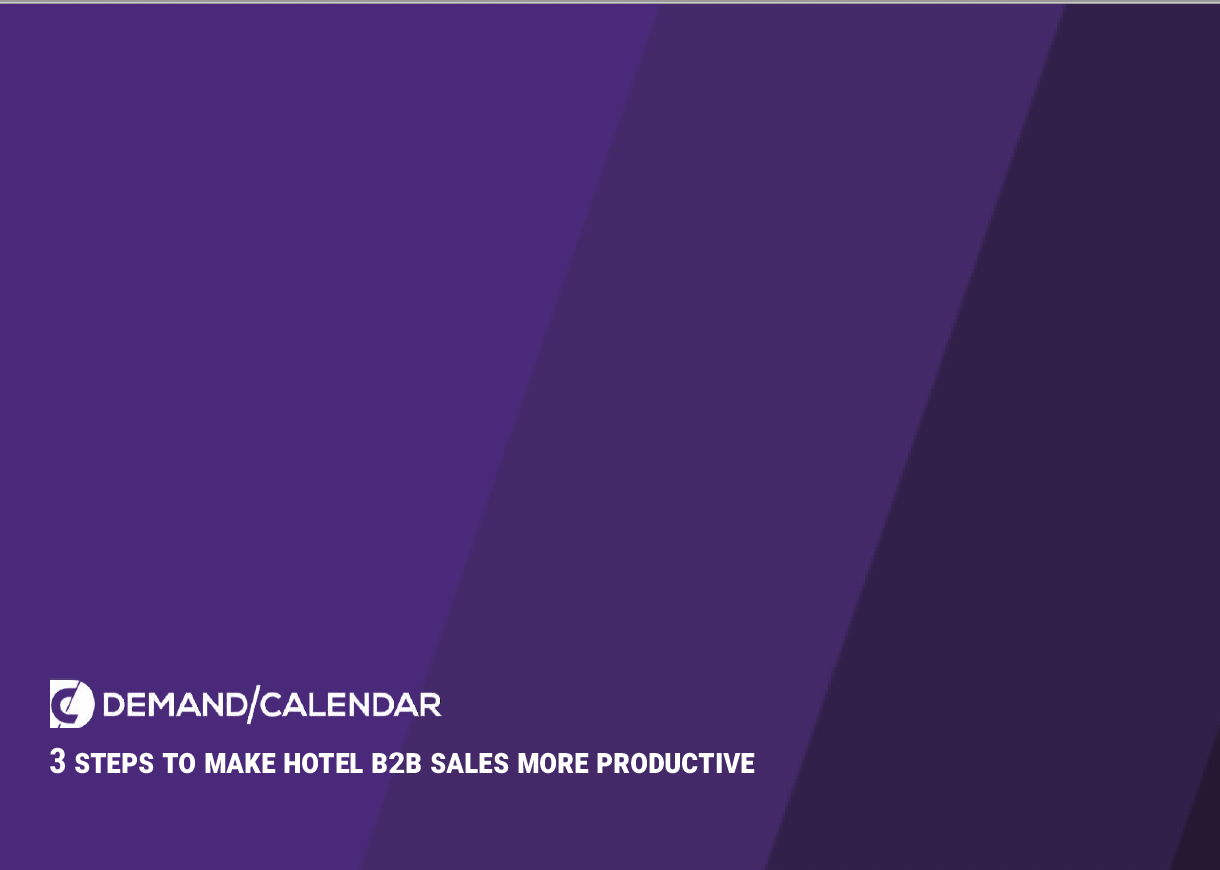Ideally, hotels would like to make the B2B sales workflow as productive as possible. However, when thinking about productivity, the opportunities are in improving the workflow, not making the salespeople work harder or longer hours.
The definition of a workflow
A simple definition of a workflow is the way people get work done. It is a process that completes a series of steps from a start to an end to finish the job. A workflow consists of people, systems, combinations, or other processes.
A simple workflow consists of six job steps: Identify, plan, execute, assess, revise and conclude. However, a workflow often has more than six steps, and within each step, there are five to ten detailed needs. By identifying all needs in detail in a workflow, it is easy to identify obstacles that make the workflow break, slow down, or take a lot of manual time to execute. For example, let's look at the hotel B2B sales pipeline for MICE inquiries.
The B2B sales pipeline for MICE
Identify
The first step is to identify and define a MICE inquiry. An in-house sales agent will probably be the first person to handle the request from the potential customer, check for availability, and give a quote or hand-over to a salesperson, depending on the size of the order.
Adding the inquiry to the hotel PMS or Sales & Catering system is critical to keep track of all requests, block inventory, and assess demand for specific days. In addition, it is impossible to optimize total revenue without adding all requests, including inquiries, when the hotel does not have any availability.
The hotel also needs to set rules for inquiries in-house sales handle, and a salesperson takes over. Size and complexity are two standard variables to define the split.
Automation between the hotel PMS and the B2B Sales CRM will make the workflow faster and more accurate. The inquiries handed over to sales automatically show up in the first stage in the sales pipeline.
The salesperson needs to identify the contacts, such as influencers and decision-makers, at the potential customer and add them to the sales CRM.
Plan
The next phase in the workflow is to plan activities to win the business. The first action is to find more information about the specific MICE for the requested dates. A meeting (physical or virtual) is a great way to quickly collect the correct information about the purpose, expected outcomes, content, and budget. Also, do not forget to ask which other hotels you compete with for the order. After the initial meeting, it is time to plan how to win the business. The plan includes crafting an attractive proposal, setting the prices (together with the revenue manager), presenting the proposal to the customer, negotiating, updating the proposal, following up, sending a contract for signing, following up, sending thank you note when you win the business, and other tasks.
A sales CRM will show all deals in a sales pipeline and store vital information about each activity to give the salesperson an overview, plan activities, and accessible communication with contacts.
Execute
Time to execute all activities and move the deal through the sales pipeline. The first step in the pipeline is inquiry. Then, the potential deal should stay here until the salesperson has added the critical contacts and activities to win the business. Part of the execution is sending an attractive proposal, negotiating, sending an updated proposal to be signed, and ensuring that the customer signs the contract.
A salesperson handles many deals simultaneously and needs support by a sales CRM to track where in the sales pipeline the deal sits and what activities the salesperson must execute to win the business.
Assess
During the negotiation, the salesperson needs to assess the situation, make necessary changes to the proposal's content, and adjust the rate with the revenue manager.
Also, assess all the potential deals in the sales pipeline and change the priorities if necessary. For example, maybe the salesperson needs to focus on the most significant possible deals or the deals closest in time.
A hotel B2B sales CRM understands the importance of filtering the sales pipeline and has these functions in the system.
Revise
The salesperson has revised the contract and sent the updated proposal to the potential customer waiting for a verbal agreement before sending the final contract for signature.
When the customer has signed the agreement, make sure that revised content and rates are present in the reservation in the hotel PMS or Sales & Catering system, so no unnecessary mistakes happen.
Conclude
Review the won and lost deals and analyze why the hotel won business and lost potential sales. Then, follow up the win rate (won deals divided by all incoming inquiries) and explore if it is according to targets.
Improve the workflow
The workflow described above is a well-designed B2B sales workflow and a good starting point for any hotel with salespeople managing inquiries. After gaining experience by working a few weeks or months in the workflow, the team will discover ways to improve the workflow to increase productivity even more.
To increase productivity for B2B sales, a hotel B2B Sales CRM will make the process faster and more accurate. Hotels that improve their workflows will become more competitive and ensure long-term success.

